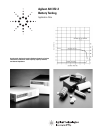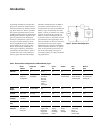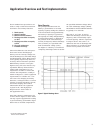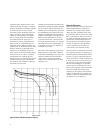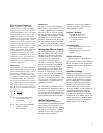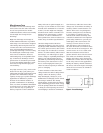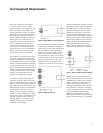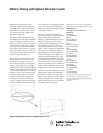
3
Seven standard test procedures
1
are
used to verify certain electrical char-
acteristics of secondary batteries:
1. Rated capacity
2. Capacity retention
3. Effective internal resistance
4. Discharge rate effect on capacity
at –20°C
5. Discharge rate effect on capacity
at 23°C
6. Life cycle performance
7. Extended overcharge
Other miscellaneous tests and proce-
dures also involve discharging a
battery such as: start-up voltage test,
forced-discharge test, timed fast charge
and dump-timed charge. Most battery
tests typically require only about 1%
accuracy unless otherwise specified.
While battery tests do not require
high accuracy, the tests must be very
repeatable. Battery characteristics
change with temperature so it is
important to be able to control and
monitor the temperature, usually to
within ±2 degrees C. Other equipment
requirements to consider are: a cur-
rent source for charging secondary
batteries, a voltage monitor, a current
monitor, a load for discharge current,
and a time keeping device. More
information about test equipment
is given in the “Test Equipment
Requirements” section later in
this application note.
Note that a battery temperature rise
of more than 5 degrees C above ambi-
ent may require supplemental cooling
to prevent battery performance degra-
dation due to elevated temperatures.
1. As specified in ANSI® C18.2-1984,
American National Standards
Rated Capacity
The principal measurement of a
battery’s performance is its rated
capacity. Capacity ratings are attained
in an accelerated test approximating
the battery’s capacity in typical use.
The capacity of a fully charged battery,
at a fixed temperature, is defined as
the product of the rated discharge
current (in amperes) and the discharge
time (in hours) to a specified mini-
mum termination voltage (volts).
See Figure 2. A battery is considered
completely discharged when it attains
the specified minimum voltage called
the “end of discharge voltage” (EODV).
The EODV for nickel-cadmium batteries
is typically 1.1 to 0.9 Volts.
The term C, or C-rate, is used to
define the discharge current rate (in
amperes), and is numerically equal
to rated capacity, which is expressed
in ampere-hours. The term 1C is
defined as the rate of discharge that
allows a battery to provide its rated
current over a period of one hour.
Application Overview and Test Implementation
Figure 2. Typical Discharge Curve



